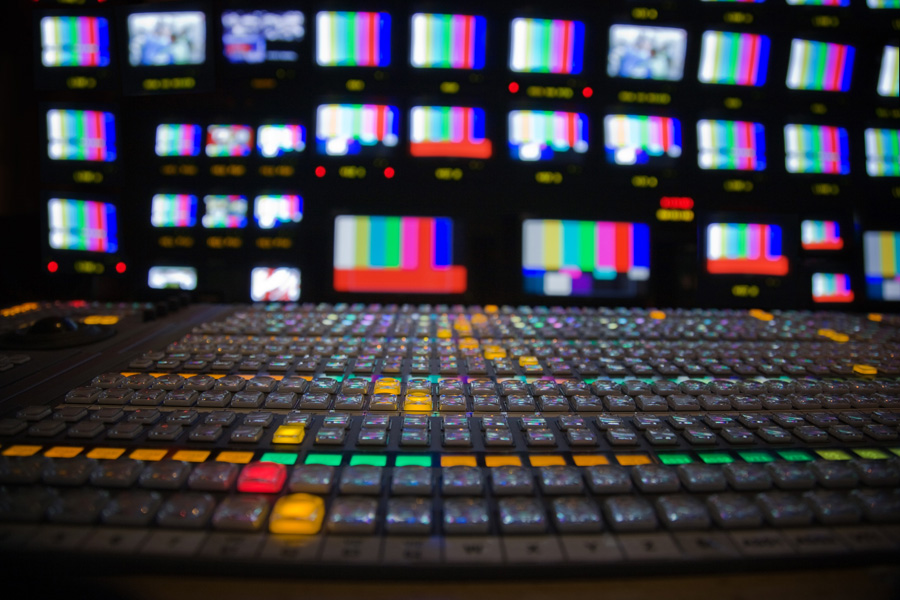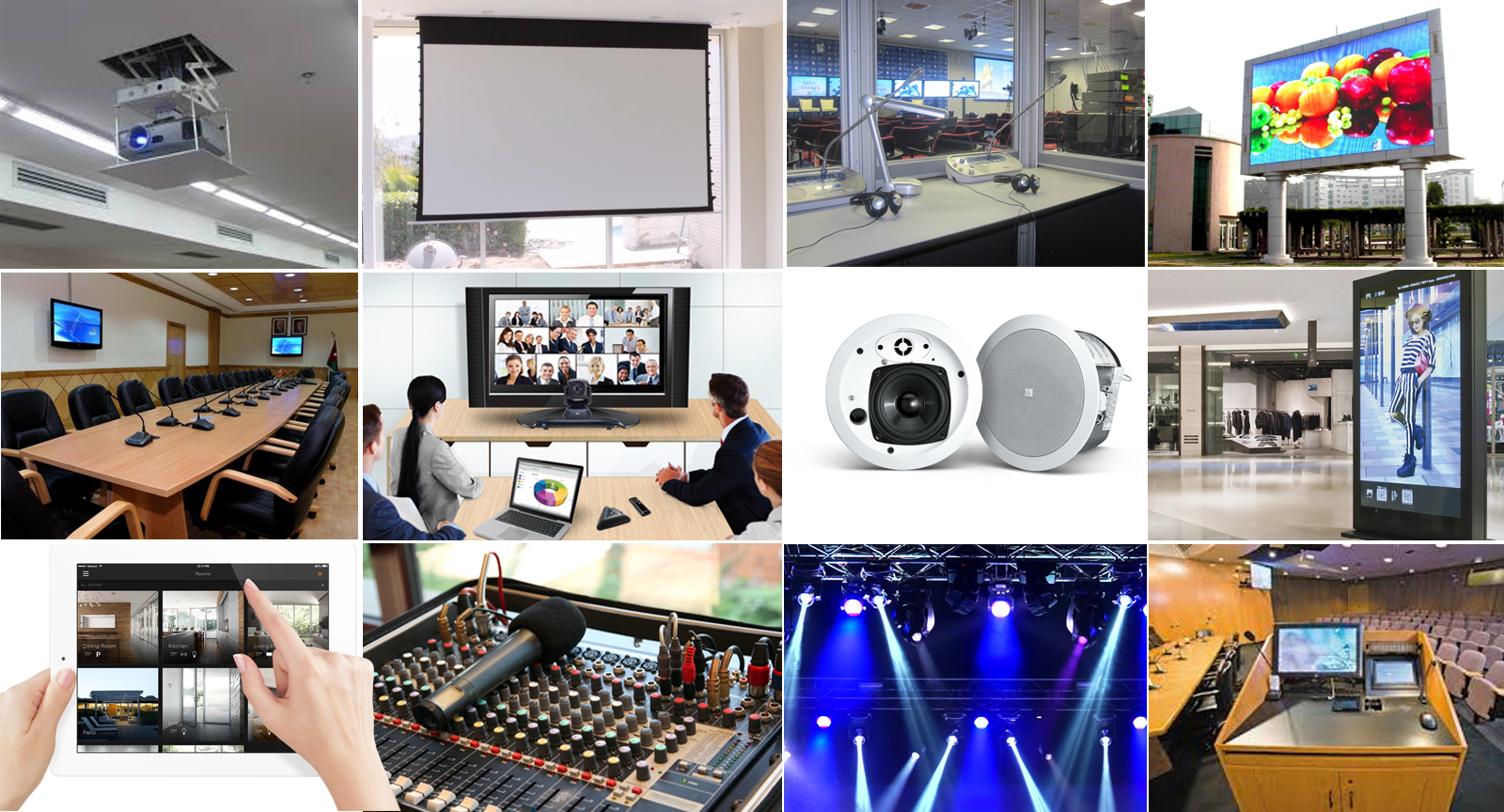How audio visual charlotte nc uses immersive displays for stunning effects
Recognizing the Addition of Audio Visual Technology in Today's Educational Environments
The combination of audio-visual modern technology in educational settings has changed the mentor and finding out process. Educators currently have access to devices that deal with various learning styles, boosting pupil involvement and cooperation. Nevertheless, the consolidation of these innovations offers both possibilities and challenges. Understanding exactly how to successfully carry out these devices is crucial. What approaches can instructors utilize to take full advantage of the benefits of audio-visual modern technology in their class?
The Evolution of Audio-Visual Innovation in Education And Learning
As instructional demands progressed over the decades, audio-visual technology undertook significant makeovers that reshaped the discovering environment. At first, tools such as film projectors and slide programs were the primary means of integrating visual aspects right into class. These early innovations given teachers with the ability to present information dynamically, yet they were limited in ease of access and interactivity.
With the arrival of videotape recorder in the 1970s, class started to include recorded lessons, expanding the range of educational resources. The intro of individual computers in the 1980s more changed this landscape, enabling for the development of multimedia discussions and interactive knowing experiences.
The rise of the net in the 1990s noted a turning point, enabling real-time accessibility to a wealth of audio-visual materials. Today, digital tools such as interactive whiteboards and on-line learning platforms continue to boost the instructional experience, fostering involvement and collaboration among students.
Benefits of Audio-Visual Equipment for Diverse Learning Styles
Audio-visual devices play a crucial function in satisfying diverse understanding designs by improving aesthetic discovering and improving acoustic engagement. By incorporating images, video clips, and audio, these modern technologies create a more inclusive educational setting. This multifaceted strategy enables teachers to address the varied choices and requirements of trainees properly.
Enhancing Visual Knowing
Interaction in the discovering procedure is markedly improved via the usage of audio-visual tools, dealing with various finding out designs. These devices, such as video clips, infographics, and interactive presentations, offer aesthetic stimulations that aid comprehension and retention. Visual learners, specifically, benefit from the incorporation of images and computer animations, which can simplify intricate principles and improve understanding. In addition, audio-visual sources can highlight real-world applications, making finding out more pertinent and appealing. By incorporating shade, motion, and sound, educators can create a vibrant understanding atmosphere that captures trainees' focus and cultivates deeper cognitive links. Inevitably, the strategic use audio-visual technology not just sustains visual knowing yet additionally enriches the general instructional experience for diverse students.
Improving Auditory Involvement
A significant advantage of including audio-visual devices in education is their capability to enhance acoustic interaction among trainees. These tools, which include multimedia presentations, podcasts, and interactive sound elements, provide to various discovering designs, especially benefiting auditory learners (audio visual charlotte nc). By integrating sound and narrative, instructors can develop immersive experiences that record students' focus and reinforce comprehension. This interaction is important, as it promotes a much deeper understanding of the product and advertises retention. Furthermore, audio-visual tools can help with collaborative knowing environments, encouraging pupils to participate in discussions and share their understandings. Ultimately, the unification of audio-visual innovation not only supports auditory involvement yet likewise improves the general academic experience, making finding out more dynamic and efficient for all students
Enhancing Involvement Via Interactive Knowing

Gamification components, such as quizzes and simulations, can enhance inspiration and retention, making discovering much more satisfying and effective. These methods not just boost cognitive interaction but likewise accommodate varied understanding styles, making sure that all students can get involved meaningfully. As a result, interactive knowing environments promote a feeling of area and belonging, inevitably causing boosted scholastic outcomes. With the integration of audio visual modern technology, educators can change conventional class right into lively spaces where pupils grow and actively form their instructional journeys.
Bridging Theory and Experiment Multimedia Resources
Multimedia resources function as an important link in between theoretical ideas and sensible application in educational setups. By improving involvement, assisting in collective learning experiences, and supporting varied understanding designs, these devices create a much more comprehensive and vibrant discovering atmosphere - audio visual charlotte nc. This technique not only promotes much deeper understanding however additionally prepares pupils for real-world challenges

Enhancing Interaction With Multimedia
Involvement in educational settings significantly raises when teachers include multimedia sources into their teaching methods. Using videos, podcasts, and interactive discussions improves the finding out experience, allowing pupils to get in touch with the product on several degrees. Multimedia sources cater to various finding out designs, giving visual, acoustic, and kinesthetic stimuli that can hold pupils' interest better than standard lecture approaches. Furthermore, these sources can simplify intricate principles, making them extra easily accessible and memorable. By integrating multimedia, educators can develop a vibrant class setting that fosters inquisitiveness and encourages students. Ultimately, the critical use audio-visual innovation serves to bridge the gap between academic expertise and practical application, improving the educational experience for both teachers and students.
Promoting Collaborative Knowing Experiences
Various research studies suggest that joint discovering experiences significantly improve pupil results when incorporated with multimedia sources. Multimedia tools facilitate communication amongst students, permitting them to engage in analytical and vital believing jointly. By making use of video clip conferencing, joint systems, and interactive presentations, instructors create settings for synergy and shared understanding. These technologies make it possible for pupils to connect their concepts properly and receive immediate comments, fostering a much deeper understanding of the subject. On top of that, multimedia sources can offer intricate concepts in even more absorbable styles, advertising conversation and collaboration. Therefore, the mix of collective learning and audio-visual technology not just improves the instructional experience however likewise prepares trainees for real-world teamwork characteristics, stressing the importance of cooperation and cumulative expertise building.
Sustaining Diverse Discovering Styles
While typical mentor approaches often accommodate a limited range of learning choices, the combination of audio-visual technology provides a more inclusive method to education and learning. By utilizing multimedia sources such as videos, interactive simulations, and digital presentations, teachers can address numerous learning designs, including aesthetic, acoustic, and kinesthetic. This flexibility permits set apart instruction, allowing students to involve with material in manner ins which reverberate with their private choices. In addition, audio-visual tools can help with much deeper understanding by giving several depictions of complicated concepts. Consequently, pupils that might fight with standard techniques can discover alternative paths to success, fostering an extra equitable understanding environment that sustains scholastic success for all students.
Challenges in Carrying Out Audio-Visual Innovation
Although audio-visual innovation holds wonderful guarantee for improving academic experiences, its execution usually comes across considerable difficulties. One key problem is the monetary worry connected with purchasing and preserving such equipment, which can stress read more budgets, specifically in underfunded establishments. In addition, poor training for teachers can prevent efficient combination, leaving them ill-prepared to make use of the technology fully. Technical concerns, such as software malfunctions and compatibility issues, may also disrupt lessons and frustrate both teachers and pupils. Varying levels of student accessibility to technology outside the classroom can create disparities in discovering opportunities. Finally, the potential for over-reliance on innovation might take away from necessary mentor approaches, ultimately restricting the instructional experience. Resolving these difficulties needs an extensive strategy, consisting of adequate funding, professional growth, and equitable access to resources, to ensure that audio-visual innovation can be leveraged successfully in today's educational settings.
Best Practices for Integrating Innovation in the Class

Additionally, fostering an interactive setting through collective devices motivates student engagement and engagement. Using diverse audio-visual resources accommodates various finding out designs, suiting aesthetic, acoustic, and kinesthetic learners. On a regular basis evaluating the impact of innovation on trainee discovering aids instructors refine their techniques and adapt to transforming demands. Finally, entailing students in the option of innovation promotes possession and motivation. By sticking to these best practices, teachers can develop a dynamic class ambience that efficiently incorporates technology and boosts the academic experience for all students.
The Future of Audio-Visual Modern Technology in Education
As class increasingly accept technology, the landscape of audio-visual tools in education and learning proceeds to advance (audio visual charlotte nc). Future developments are anticipated to focus on better interactivity and personalization, allowing teachers to tailor discovering experiences to individual trainee demands. Technologies such as enhanced truth (AR) and virtual truth (VR) will likely provide immersive learning atmospheres, improving trainee engagement and understanding
Artificial intelligence (AI) is positioned to play a substantial duty in audio-visual technology by providing real-time feedback and adaptive understanding paths. This integration might assist teachers identify and deal with pupil difficulties better. Cloud-based systems will certainly assist in easier accessibility to resources and collaboration amongst trainees and educators, no matter of area.
In addition to these technological breakthroughs, professional advancement for teachers will be important, ensuring they are equipped to use these devices efficiently. In general, the future of audio-visual innovation in education and learning assures to create more dynamic, inclusive, and impactful understanding experiences.
Often Asked Concerns
How Can Educators Pick the Right Audio-Visual Tools for Their Classrooms?
Choosing ideal audio-visual devices requires educators to examine their educational objectives, consider student requirements, evaluate available modern technology, and seek suggestions from peers or experts, making sure devices effectively improve knowing and involvement within their details classroom atmosphere.
What Spending plan Factors to consider Are There for Implementing Audio-Visual Modern Technology?
Spending plan considerations for applying audio-visual technology consist of preliminary purchase prices, upkeep expenditures, training for personnel, and potential software application licensing fees. Furthermore, lasting investment in updates and replacements must also be factored right into financial planning.
Are There Particular Training Resources for Educators on Audio-Visual Equipment?
Lots of institutions supply training sources for educators on audio-visual devices, consisting of on the internet courses, workshops, and training guides. These resources aim to enhance instructors' abilities and self-confidence in properly integrating technology into their training methods.
Exactly how Do We Gauge the Effectiveness of Audio-Visual Technology in Learning?
Gauging the effectiveness of audio-visual modern technology in discovering includes examining student involvement, comprehension, retention prices, and total scholastic performance. Studies, analyses, and observational researches can supply valuable insights right into its influence on instructional end results.
What Are Common Mistaken Beliefs Regarding Audio-Visual Modern Technology in Education And Learning?
Typical mistaken beliefs regarding audio-visual innovation in education and learning consist of the belief that it guarantees interaction and finding out end results, in addition to the assumption that all students benefit similarly, overlooking specific discovering choices and demands.